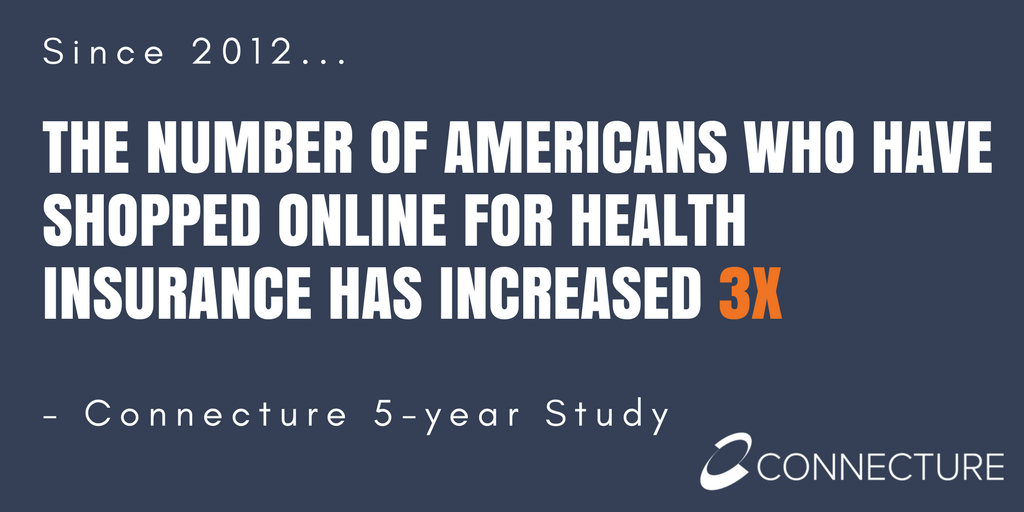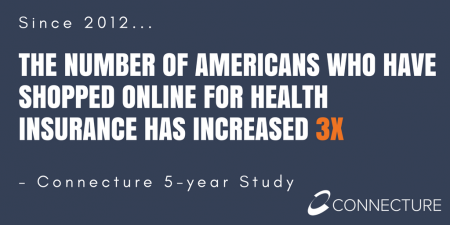
Between 2012 and 2017, the number of US consumers who shopped online for health insurance grew by three times, from 14% to 42%, according to a survey from Connecture.
Cost first, then “keeping my doctor,” are the two top considerations when shopping for health insurance. 71% of consumers would consider switching their doctor(s) to save on plan costs. Beyond clinician cost, health plans shoppers are also concerned with prescription drug costs in supporting their decisions. 80% of consumers would be willing to talk with their doctors about prescription drug alternatives, looking for a balance between convenience and costs, Connecture found.
While health plan shopping has grown, note that, “choice is positive, but consumers don’t need too much,” Connecture learned. 80% of consumers think fewer than 10 plans is a “good amount” to choose from when shopping for health plans.
Connecture identified five drivers that emerged over the past five years:
- “Exploding” health care access and choice
- More confident health-purchasing consumers
- Growing burdens on health care consumers
- Peoples’ increasing demand and need for decision-making tools
- Need to bend the health care cost curve.
What drove millions of more people to shop for health insurance was, of course, the Affordable Care Act, which led to the development of health insurance marketplaces offering the un- and under-insured on-ramps to selecting and purchasing coverage. This led to a fall in the percent of uninsured people in America, basically by half, from 16% in 2010 to 8.6% by 2017.
For people seeking individual health insurance plans, shopping grew by 39% of these consumers, doubling to 80% in 2017. 4 in 10 of these people spent more than 2 hours researching plans online.
Consumers who enrolled online (versus on paper) showed greater shopping-engagement. Those who enrolled online were more likely to be engaged around health care costs, and to be more interested in dental coverage, life insurance, and gym memberships.
Specifically, for online activities,
- 56% of consumers shopped for health insurance with little (human) assistance
- 49% researched consumer ratings and reviews of health plans
- 43% enrolled for health insurance with little (human) assistance.
Note that 41% of consumers got advice from friends and family; social networks continue to be important health-shopping information sources for a plurality of people.
It’s also important to note that mobile-first is growing in health insurance shopping: in 2017, 39% of consumers started their health insurance shopping journey via a mobile device.
Health Populi’s Hot Points: Costs couple with personalization for health plan shoppers, based on this survey’s findings. Health plan shoppers who have access to decision support tools are three times more likely to select a best-fit plan. One-half of consumers want to see a list of potential health events and what these would cost them under the health plan. 40% of people want to understand the cost for a doctor visit based on a personal health condition.
There’s an opportunity here to leverage data on patients’-consumers’ preferences for cost and clinician characteristics, coupled with health conditions, health status, and demographics, to serve up customized advice for best-fit health plans.
Lest health plans lack confidence in this approach, or feel a lack of data availability, a consumer’s postal/ZIP code can offer a lot of insights in terms of social determinants of health — access to health care services, transportation, healthy food, education, and other key factors that support community and personal health.
This approach takes a page out of the retailer’s playbook in the ongoing evolution of consumer-driven health.





 Interviewed live on BNN Bloomberg (Canada) on the market for GLP-1 drugs for weight loss and their impact on both the health care system and consumer goods and services -- notably, food, nutrition, retail health, gyms, and other sectors.
Interviewed live on BNN Bloomberg (Canada) on the market for GLP-1 drugs for weight loss and their impact on both the health care system and consumer goods and services -- notably, food, nutrition, retail health, gyms, and other sectors. Thank you, Feedspot, for
Thank you, Feedspot, for  As you may know, I have been splitting work- and living-time between the U.S. and the E.U., most recently living in and working from Brussels. In the month of September 2024, I'll be splitting time between London and other parts of the U.K., and Italy where I'll be working with clients on consumer health, self-care and home care focused on food-as-medicine, digital health, business and scenario planning for the future...
As you may know, I have been splitting work- and living-time between the U.S. and the E.U., most recently living in and working from Brussels. In the month of September 2024, I'll be splitting time between London and other parts of the U.K., and Italy where I'll be working with clients on consumer health, self-care and home care focused on food-as-medicine, digital health, business and scenario planning for the future...